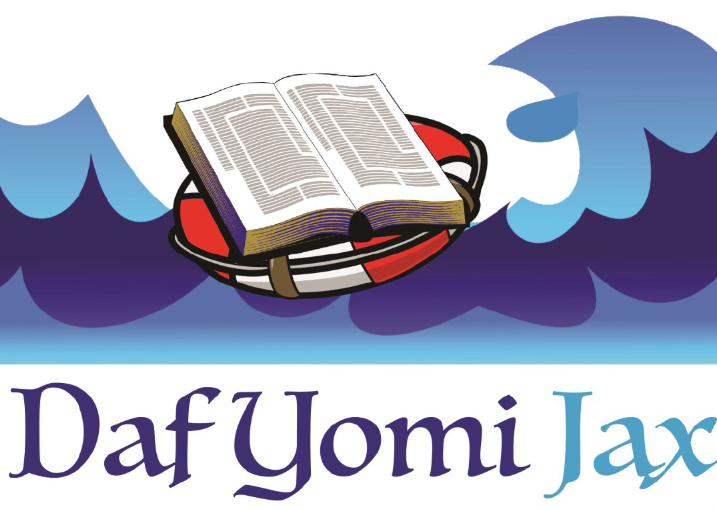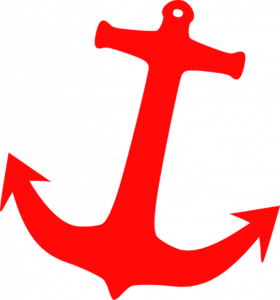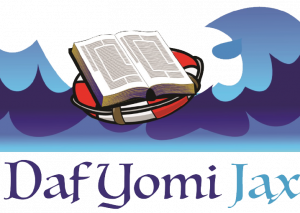Yoma 40-46 יומא ל”ג-ל“ט

From the Desk of Rabbi Yaakov Fisch
Our studies in the Daf Yomi this week pretty much stuck to the topic at hand, and that is the Avodah on Yom Kippur. There was an interesting comment that was uttered by the Talmudic Sage Rava that caught my attention. Rava responded to someone he felt did not interpret the halacha consistent with the text in the Mishna. He said, “ who is this that does not grind his flour well”? This statement is to be understood as a metaphor. He was criticizing the person for not having the complete grasp of the Torah that he was studying. He was comparing this to wheat being ground into flour. Just as it is important for the wheat to be adequately ground into flour and there are no coarse parts left unground, it is important for us to regularly review our Torah study to ensure that we have a good understanding of all the Torah we study.
Have a Peaceful Shabbos,
Rabbi Yaakov Fisch
Yoma 40
The Gemara records a dispute between Rabbi Yannai and Rabbi Yochanan if the drawing of the lots is מעכבת. This means if it was not done, would the entire process be invalid or not. It’s really a question of b’dieved or post facto if it was not done in the correct manner. Rabbi Yannai says its a deal-breaker, while Rabbi Yochanan says it is not. The Halacha is that the lots must be done and it is a deal-breaker if it was not done. That is the view of the Rambam, even though he says it not technically not an avoda. The Rambam further says since it is מעכבת it cannot be done with a non kohen. The Lechem Mishneh challenges this by asking that shechita the halacha is since it is not an avoda a non kohen can perform it! So, if the Rambam classifies the drawing of the lots as a non- avoda, it should not be מעכבת! The
Lechem Mishna answers there is a distinction between shechita and drawing of the lots. Shechita is not considered an avoda at all as anyone can do the shechita, including women. On the other hand, drawing of the lots, even though it is technically not an avoda, may only be performed by the assistant to the Kohen Gadol (if the Kohen Gadol is not available) and nobody else. That would put it in a different category than shechita.

Yoma 41
The Mishna teaches about the goat that was sent off the cliff as an atonement. There was a crimson thread that was tied to the head of the goat before the process began. There is a debate if this goat was considered a korban or not. The Brisker Rav has a lengthy essay on this and argues that despite this goat not being slaughtered in the traditional manner this goat was considered a korban. This had a couple of practical ramifications. Firstly, only korbanos could be funded from the public coffers. If this goat was not considered a korban, it could not be funded from the public coffers. The Brisker Rav argues since it was in the category of a korban, it could be funded from the public
coffers. Also, since it was a korban, it would be permitted to carry it to the Beis Hamikdash on Yom Kippur if necessary. Otherwise, it would be prohibited to carry it on Yom Kippur. One other question that is asked, how was the tying of the crimson permitted on the goat? This is technically not an avoda! This is preparation for the avoda and tying is a melacha on Shabbos! How was this permitted? I have seen a couple of answers but found them unsatisfactory so I will leave the question unanswered.


Yoma 42
The Gemara has a debate if the requirement for the thread applies to the Parah Aduma or the goat that was sent away. The Gemara concludes that it was referring to the goat that was sent away. That day (that this teaching was taught) Ravya Bar Kisi died. This reflects the connection to the goat that was sent away as both the death of the righteous and the goat that was sent away were events that brought atonement to Klal Yisroel. The Tosfos Yeshonim
challenges this by asking that the Parah Aduma was also a source of atonement to Klal Yisroel! How then does the death of the tzaddik reflect anymore the goat that was sent away than the Parah Adumah? The Tosfos Yeshanim responds that the primary reason the goat was sent off the cliff on Yom Kippur was to atone for Klal Yisroel. On the other hand, the primary reason for the Parah Aduma was for Tahara (ritual purification) and not atonement.



Yoma 43
The Gemara explains the difference between the first and second viduim/confessions that the Kohen Gadol recites. The first one only mentions the sins of the Kohen Gadol and his wife whereas the second vidui/confessional mentions the sins of the other Kohanim. The Gemara explains that first a person must be in a state of purity himself before he come to daven for the purity of others. That is why the Kohen Gadol in his first vidui, he davens for himself and his wife and only after that is he worthy to daven on behalf of others. In the third vidui, the Kohen Gadol increases the scope of his tefila as he prays on behalf of the entire Jewish People. This is also reflected in our Musaf service on Yom Kippur. In the Avoda section of Yom Kippur, we first recite the first vidui of the Kohen Gadol that is followed by the
second and third vidui. The more significant lesson here is that an individual who is in a position of influence with others must work on himself first. It’s important to get one’s house to be an effective role model in Avodas Hashem. The Chofetz Chaim says that he was mistaken in his younger age that he thought he could change the world. When he realized the futility in that he attempted to change the mindset of his town. After being unsuccessful in influencing his townspeople, he attempted to work on his family to no avail. He later reflected that he should have started the other way around. In order to ultimately be successful in changing the world, one must first work on themselves.
Yoma 44
The Mishna describes the difference in several different areas between the daily Avoda and the Yom Kippur Avodah. One of the differences was that the Kohen Gadol used a shovel made of silver every day for the coals to be used on the incense. On Yom Kippur, the shovel was made out of gold. The Gemara explains the reason that the shovel was made out of silver the rest of the year. This is known as התורה חסה על ממונן של ישראל. It was because the Torah was sensitive to the finances of the Jewish People. Since silver was less expensive than gold, it was preferable to use the silver shovel for this reason. A question is asked, and that is, it is mentioned in other places that one should spend extra to perform a mitzvah! For example, it is considered commendable to spend extra on an Esrog, so why should this be different? The Tiferes Yisrael explains
that one must strike a balance between the value of התורה חסה על ממונן של ישראל and the value for spending extra on a mitzvah. One can spend extra as long as it is not a significant financial loss (hefsed merubah). If it is a significant financial loss than we apply the value of התורה חסה על ממונן של ישראל. The Ritva explains that the value of התורה חסה על ממונן של ישראל applies to something which is not an actual avodah. For example, the act of shoveling the coals is not considered an essential avoda but rather a preparation for the avoda. If something was considered an actual avoda, than one can spend any amount for the mitzvah.
Yoma 45
One of the several differences between the service on Yom Kippur versus the daily service is that that there was one extra מערכה or fire that was on the mizbeach on Yom Kippur. There is a dispute between Rabbi Yehuda, Rabbi Yosi, and Rabbi Meir how many were lit on a daily basis and how many were lit on Yom Kippur. All agree that there were one extra מערכה on Yom Kippur. The Gemara says the source is from the word והאש. Even if the letter וא”ו is not sufficient to source anything from but the combination of both letters וא”ו ה”א reflect the extra fire on Yom Kippur. The question is, how do we see that from the two extra letters? The basic idea is that the fire in the Beis Hamikdash was not just a physical flame but instead was a very spiritual as a manifestation of an intense presence of G-d in this world. This is reflected in this week’s Parsha as the famous interpretation of Rashi that G-d comforted Aaron that he would light the Menorah as “what you’re doing is greater than what the Leveim are doing.” What was so special about the kindling of the Menorah? After all the Kohen Gadol had several responsibilities? This comes to teach us the deeper message of the fire in the Beis Hamikdash (both from the menora and the mizbeach). That it is a deep and intense manifestation of the presence of G-d in this world and that is why Aaron was comforted with this message. I believe that is why there was one extra fire on Yom Kippur more than any other day, as Yom Kippur had a much more intense presence of God that day. Perhaps that is the reason of the source וא”ו ה”א. These are the letters of Hashem or the Shem Havaya. The Gemara teaches since the word contains the וא”ו ה”א, it must be referring to Yom Kippur as that day had the most intense presence of G-d.
Yoma 46
It is well known that there is a dispensation that permits the slaughtering and bringing the sacrifice on Shabbos, and putting it in the fire on the altar. Our Gemara discusses an interesting case where not all the animal parts of the previous days sacrifice (Friday) were consumed on Friday. The issue debated is whether the special dispensation that allows putting animal parts into the fire on Shabbos would be applicable to the “leftover” parts of the Friday sacrifice that had not been fully consumed. According to Rav Elazar, in the name of Bar Kapara, it would be possible just as putting the sacrifice of Shabbos is permitted into the fire. However, Rav Huna disagrees and argues that the special dispensation applies only to sacrifices that were initially obligated on Shabbos. If these parts are merely leftovers from the Friday sacrifice, it would not be permitted to put it in the fire on Shabbos. There’s a somewhat related discussion in the Laws of Tefila/Prayer. Under certain circumstances, one is supposed to be daveing a tefila an additional tefila as תַשְׁלוּמִין. Suppose one has to daven his תַשְׁלוּמִין on a different day with a different tefila than from the day his original obligation was. For example, one has to make up a תַשְׁלוּמִין from Friday afternoon, and now it is Friday night/Shabbos. Which Shemoneh Esrei should he daven? Should he daven the Shabbos Shemoneh Esrei as it’s Shabbos now or should he daven the weekday Shemoneh Esrei since that’s the original obligation? The Shulchan Aruch rules in Ch. 108 of the Laws of Tefila that one must daven the Shemoneh Esrei of Shabbos as the תַשְׁלוּמִין for the tefila that he needs to make up from the weekday. These are the words of the Shulchan Aruch: טָעָה וְלֹא הִתְפַּלֵּל מִנְחָה בְּעֶרֶב שַׁבָּת, מִתְפַּלֵּל עַרְבִית שְׁתַּיִם שֶׁל שַׁבָּת: הָרִאשׁוֹנָה לְעַרְבִית, וְהַשְּׁנִיָּה לְתַשְׁלוּמִין. The Mishna Berura explains that this is required since today it is Shabbos. We determine the Avoda based on what day it actually is now and not what it was in its origin. These are the words of the Mishna Berura: אע”ג שבאה לתשלומין של חול מ”מ כיון שעכשיו הוא שבת מתפלל אותה ג”כ של שבת. This sounds very familiar in concept to our Gemara which, according to Rav Elazar, the leftover parts of Friday have the status of Shabbos on Shabbos and can be consumed on Shabbos.
Weekly Quiz
-
1.What is the dispute between Rabbi Yannai and Rabbi Yochanan regarding the Kohen Gadol drawing the lots on Yom Kippur?
-
2. According to Rav Chisda, at what point can the pair of bird offering be designated for their specific sacrifices?
-
3. Which vidui does the Kohen Gadol recite after the designation of the two goats?
-
4. Does the shechita of the Parah Aduma need to be performed by a Kohen?
-
5. What is the difference between the first and the second vidui that the Kohen Gadol recites? What is the reason for that?
-
6. What does the Ketores atone for?
-
7. How do we see the Torah was sensitive to the finances of the Jewish people?
-
8. How many fires were there everyday on the mizbeiach? How many were there on Yom Kippur?
-
9. If animal parts from Fridays korban was not consumed on Friday, can it be put in the fire on Shabbos?
